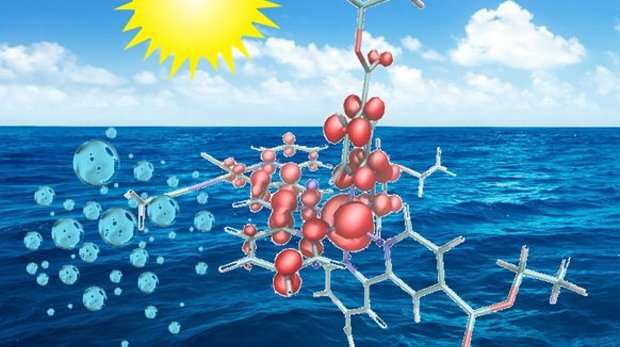Novel design strategy for hydrogen-generating molecular photocatalysts

An international collaboration coordinated by scientists at the University of Twente (TNW/MESA+) has resulted in a new design approach for hydrogen generating photocatalysts. The authors observed that violating the commonly accepted state-of-the-art design strategy strongly improves the hydrogen generation efficiency. The novel approach shows high promise for efficient direct conversion of sunlight into green fuel. The results are published in the leading journal Chemical Communications.
Photocatalysis
Direct conversion of sunlight into green fuels like hydrogen or methanol is a highly promising alternative for the use of fossil fuels, and intensively investigated. The solar-to-fuel conversion efficiency of the current generation photocatalysts, however, is low. To improve this efficiency, it is essential to control the chain of ultrafast processes initiated by sunlight absorption. These processes can be studied in real-time by advanced optical techniques using femtosecond laser pulses.
Novel design approach
What exactly happens in the photocatalyst nanostructure immediately after light absorption is very important for the solar-to-fuel conversion efficiency. The photocatalyst consists of a number of units, including a light absorber connected via a bridge to a catalyst producing the fuel using e.g. water as a source. State-of-the-art photocatalysts are designed such that light absorption leads to a move of electron density from the light absorber to the bridge, which acts as electron storage reservoir and supplies electrons for hydrogen generation to the adjacent catalyst. The present work shows that violating this design approach largely improves the hydrogen generation efficiency. The novel strategy developed is based on a storage reservoir elsewhere in the photocatalyst, which approach lowers losses before hydrogen generation occurs. The large increase in hydrogen generation output realized illustrates the potential of this new design strategy.
More information: Qing Pan et al. Peripheral ligands as electron storage reservoirs and their role in enhancement of photocatalytic hydrogen generation, Chem. Commun. (2016).
Journal information: Chemical Communications
Provided by University of Twente




















